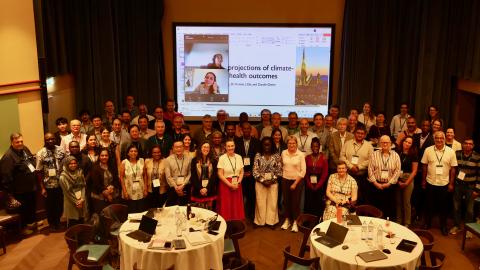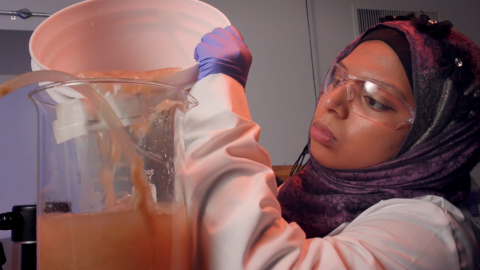Our planet’s climate is continuously changing and with that comes a significant and growing threat to human health. As severe weather events become more frequent and last longer and air pollution worsens, the risk of illness and death increases. These effects are not equitably distributed – vulnerable and marginalized populations bear the brunt of the burden.
Public Health – Seattle & King County’s Climate & Health Equity Initiative, has been working on a pilot project called Climate and Health Adaptation Mapping Project for Community Determined Solutions (CHAMP-CDS). This project has required extensive collaboration with Dr. Saria Hassan from Emory University, The City of Auburn and their Blue-Ribbon committee, “Healthy Auburn for Life”, and CHanGE.
The goal of this project is to develop community-driven solutions to climate change health impacts in Auburn, Washington – an area disproportionately impacted by extreme heat.
A look into Auburn, WA
Various socioeconomic factors make the population in Auburn particularly vulnerable to extreme heat. For example, compared to King County as a whole, Auburn residents report lower income and have a higher proportion of people who do not speak English as a first language. These kinds of financial and language barriers may make it more difficult to access emergency services and heat-related health information.
At the same time, extreme heat heavily impacts Auburn. This city is an urban heat island, meaning it experiences higher temperatures than surrounding areas from the built environment infrastructure (such as pavement and asphalt) absorbing and re-emitting heat. The area was significantly affected by the 2021 Heat Dome – a period of unprecedented heat throughout the Pacific Northwest.
Brad Kramer, PhD, the program manager for the Climate and Health Equity Initiative at Public Health – Seattle & King County (PHSKC), explains, “The 2020 heat mapping done in King County clearly shows the places in our county where heat exposure is much higher. If you place this map side-by-side with the State’s environmental health disparities map, Auburn has many of these so-called ‘hot spots’ or communities most impacted by heat that are simultaneously experiencing other environmental health burdens.”
The CHAMP-CDS Project
The CHAMP-CDS project gathered 15 community members in Auburn to hear their lived experiences with extreme heat and teach them about heat-related health impacts. Collectively, these community members, known as “CHAMPions,” created a model for solutions to extreme heat to share with decision makers.
Cat Hartwell, the CHAMP-CDS project manager at PHSKC, highlights the importance of community engagement. She says, “The work of CHAMP-CDS is so important because we know that the drivers of heat risk are locally specific and in order to reduce that risk, we need solutions that are tailored to the needs of the community. The CHAMP-CDS workgroup comprised people with lived and/or professional experience with heat-related health risk, and they collectively developed and prioritized a suite of policies and interventions to meet the needs of Auburn community members.”
A cornerstone of this project was Chart, an interactive decision-support tool from CHanGE that helps people explore how various factors contribute to climate risks that affect communities, and then points them toward possible solutions.
At the CHAMP-CDS meetings, there were two different activities centered around Chart. First, it was used to support participants’ understanding of how heat impacts health, specifically in Auburn.
The second activity focused on gathering community feedback and data to improve Chart. CHanGE and PHSKC worked together to add data into Chart’s model, evaluate risk estimates for King County, and fine-tune the tool to more accurately predict health effects associated with heat.
Oliver Markley, PhD, a professor emeritus and former chair for the graduate program in Strategic Foresight and Studies of the Future at the University of Houston-Clear Lake, was one of the CHAMPions for this project.
He reveals, “As a retired professor of strategic foresight, who, back in the 1970s, forecasted social impacts due to global warming, it was a distinct pleasure to be part of a community engagement project to ameliorate near-future impacts of global warming on health. Overall, I was amazed to see how state-of-the-art methods in the Chart tool could be effectively communicated and used for community-based policy development.”
Looking ahead
In reflecting on the CHAMP-CDS project, Dr. Jeremy Hess, professor and director of CHanGE, notes, “Our engagement with the CHAMP-CDS project has given us great insight into how to improve Chart and how to use it for community engagement in other settings. We hope that the CHAMPions found Chart to be helpful to their work, and are looking forward to building on all we’ve learned for future engagements with other communities.”
Kramer echoes this anticipation of how the CHAMP-CDS project might influence future work around heat and health. He says, “Our hope is that other, neighboring communities that experience elevated heat risk will benefit from the lessons learned as well.”
This summer, the CHAMP-CDS team will be sharing findings with decision makers and other interested parties around King County. They are also developing a project report to be shared in the fall of 2025 and academic manuscripts to be published in 2026.
Learn more about extreme heat preparedness here.
- Heat



